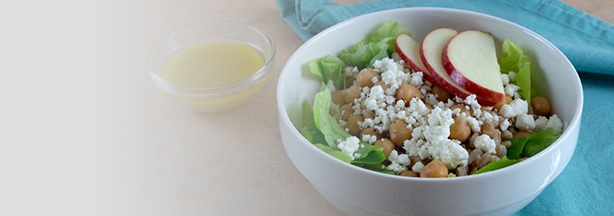Digging Into the Dialysis Diet When You Have Kidney Failure
There are two things to know about the dialysis diet: First, it’s different from the food choices you may already be making and second, try not to make too many changes at once. Some people with kidney failure who are on the dialysis diet (also known as a kidney diet) start out focusing on what they “can’t” eat. While there are certainly foods and beverages to avoid, remember that following dialysis nutrition guidelines is a way to take control of your health and have a better quality of life.
How to approach a kidney diet
Think of the dialysis diet as an opportunity to try new things. Exploring delicious kidney-friendly recipes, planning meals on the DaVita Diet Helper and sharing them with your family can be fun and enjoyable.
Know the kidney diet differences
|
Pre-Dialysis Diet |
Dialysis Diet |
Diet Tip |
|
|
Fluid |
Fluid, which can be found in everything from beverages to fruit and vegetables, is usually not restricted at this point. |
Most people on dialysis need to limit fluid intake to 4-8 cups a day. |
Frozen grapes, lemon wedges, mouthwash rinses and ice help decrease thirst. |
|
Potassium |
You likely won't be on a restricted potassium diet unless your blood levels are high. |
Your type of treatment and personal lab results will determine if a low-potassium diet is needed. |
Limit common potassium sources such as bananas, oranges, potatoes, tomato products, avocado, yogurt and nuts. |
|
Phosphorus |
If labs show you have high phosphorus levels, you may be eating less dairy, nuts, legumes, meat and soy. |
People on dialysis generally continue to limit foods high in phosphorus and often take phosphate binders to keep levels in a healthy range. |
Read food labels closely and look for phosphate additives that can add a significant amount to your daily intake. |
|
Sodium |
You’re probably limiting your sodium intake to around 1,500 mg a day—choosing fresh foods over processed, picking low-sodium products and eating fewer fast foods. |
Your new daily target could be from 1,000 mg to 3,000 mg depending on your treatment type. You’ll still want to continue eating fresh, low-sodium, home-cooked meals. |
Discover a whole new world of low-sodium flavors with herbs, spices, vinegar and flavored oils. |
|
Protein |
As kidney function declines, you may be eating less protein to minimize protein-related waste buildup in your blood. |
A low-protein diet is no longer needed. In fact, people on dialysis need to eat extra protein to replace some lost during dialysis. |
Choose at least half of your protein from high-quality sources, such as meat, seafood, poultry and eggs. |

Download
Cookbooks

Eating Out
Guides
See kidney-friendly food and drink choices to consider when eating out at your favorite restaurants. Choose from 12 cuisine types.
